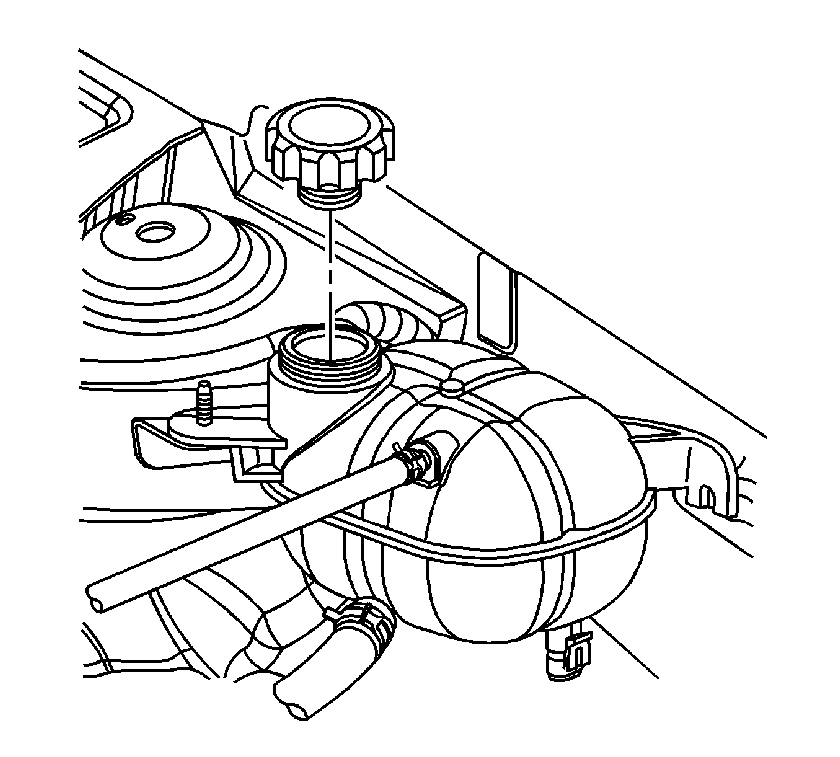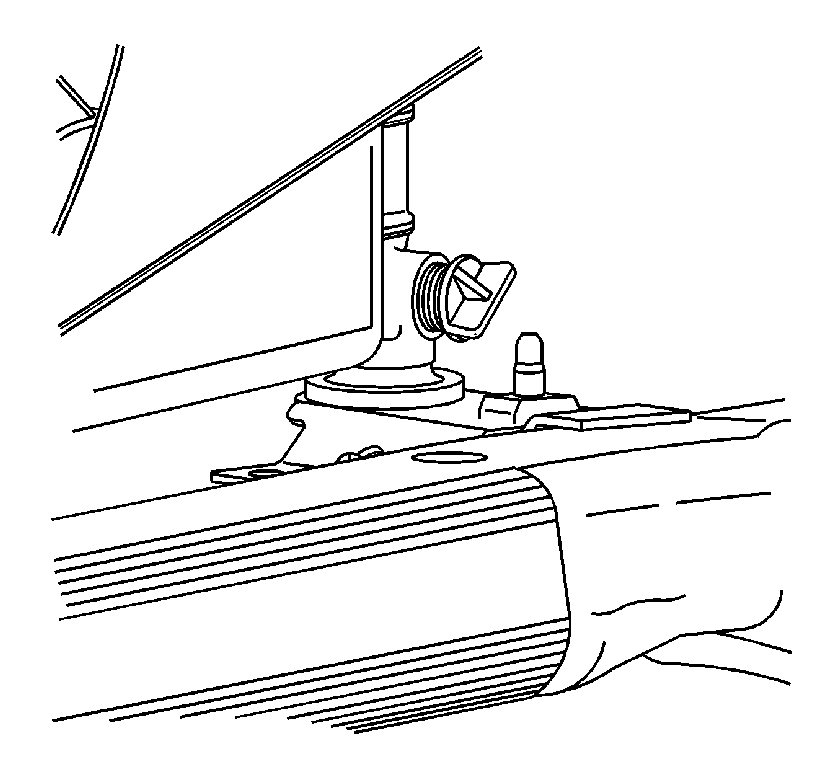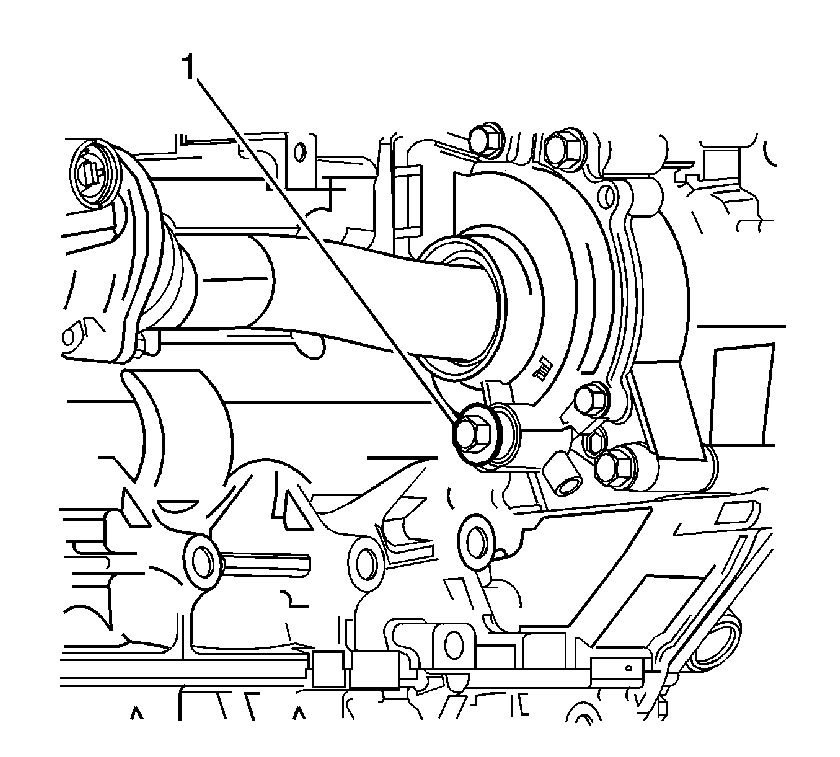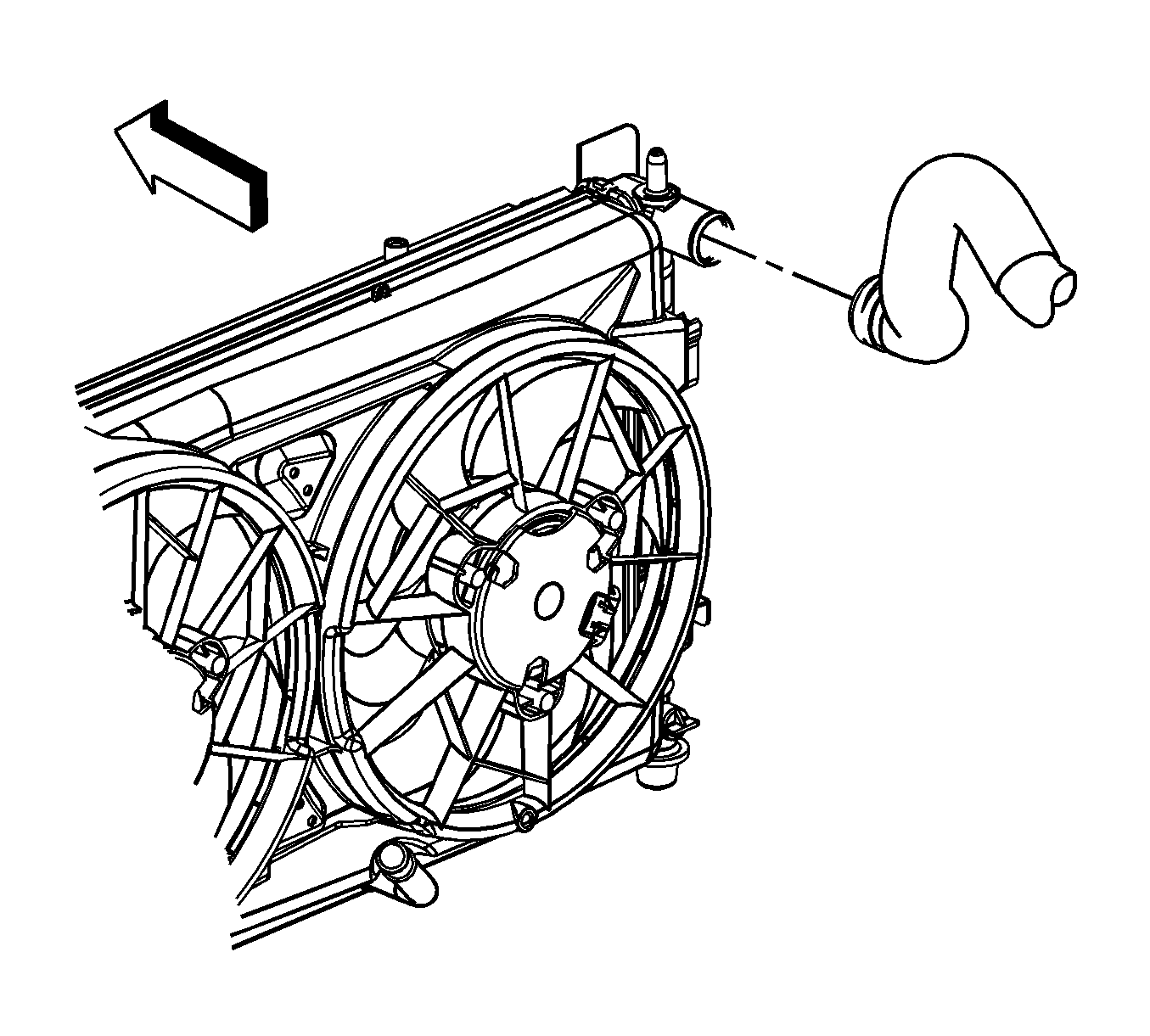Cooling System Draining and Filling 2.2L (L61), 2.4L (LE5) Static Fill
Draining Procedure
- Remove the surge tank cap.
- Raise and support the vehicle. Refer to Lifting and Jacking the Vehicle .
- Place a drain pan under the right side lower radiator mount.
- Open the radiator drain cock.
- Drain the cooling system.
- If a complete block drain is required, place a drain pan under the water pump drain.
- Remove the water pump drain plug (1).
- Drain the cooling system.
- Inspect the appearance of the engine coolant for discoloration:

Caution: To avoid being burned, do not remove the radiator cap or surge tank cap while the engine is hot. The cooling system will release scalding fluid and steam under pressure if radiator cap or surge tank cap is removed while the engine and radiator are still hot.


| • | Discolored--Follow the flush procedure. Refer to Coolant System Flushing . |
| • | Normal in appearance--Follow the filling procedure. |
Filling Procedure
- Close the radiator drain cock by hand.
- Install the water pump drain plug (1) if removed during the draining process.
- Lower the vehicle.
- Slowly add a mixture of 50/50 DEX-COOL antifreeze and deionized water to the cooling system until the coolant level reaches and maintains slightly above the cold fill line on the surge tank. Refer to Approximate Fluid Capacities .
- Install surge tank cap.
- Start the engine.
- Run the engine at 2,000-2,500 RPM for 3 minutes.
- Allow the engine to idle for 30 seconds.
- Shut the engine off.
- Top off the coolant as necessary.
- Inspect the cooling system for leaks.
- Rinse away any excess coolant from the engine and the engine compartment.
Notice: The procedure below must be followed. Improper coolant level could result in a low or high coolant level condition, causing engine damage.

Notice: Refer to Fastener Notice in the Preface section.

Tighten
Tighten the plug to 22 N·m (16 lb in).
Important: Use a 50/50 mixture of DEX-COOL antifreeze and clean, drinkable water. It is necessary to maintain the coolant level near the cold fill line on the surge tank to insure all the air has been purged from the cooling system.

Cooling System Draining and Filling 2.0L (LSJ) Static Fill
Draining Procedure
- Remove the surge tank cap.
- Raise and support the vehicle. Refer to Lifting and Jacking the Vehicle .
- Place a drain pan under the right side of the lower radiator mount.
- Open the radiator drain cock.
- Drain the cooling system.
- If a complete block drain is required, place a drain pan under the water pump drain.
- Remove the water pump drain plug (1).
- Drain the cooling system.
- Inspect the appearance of the engine coolant for discoloration:

Caution: To avoid being burned, do not remove the radiator cap or surge tank cap while the engine is hot. The cooling system will release scalding fluid and steam under pressure if radiator cap or surge tank cap is removed while the engine and radiator are still hot.


| • | Discolored - Follow the flush procedure. Refer to Coolant System Flushing . |
| • | Normal in appearance - Follow the filling procedure. |
Filling Procedure
- Close the radiator drain cock by hand.
- Install the water pump drain plug (1) if the plug was removed during the draining process.
- Lower the vehicle.
- Remove the upper radiator inlet hose from the passenger side radiator.
- Slowly add a mixture of 50/50 DEX-COOL antifreeze and deionized water to the engine through the upper radiator hose.
- Install the upper radiator inlet hose to the radiator.
- Slowly add a mixture of 50/50 DEX-COOL antifreeze and deionized water to the cooling system until the coolant reaches and maintains a level slightly above the cold fill line on the surge tank. Refer to Approximate Fluid Capacities .
- Install surge tank cap.
- Start the engine.
- Run the engine at 2,000-2,500 RPM for 3 minutes.
- Allow the engine to idle for 30 seconds.
- Shut the engine off.
- Top off the coolant as necessary.
- Inspect the cooling system for leaks.
- Rinse away any excess coolant from the engine and the engine compartment.

Notice: The procedure below must be followed. Improper coolant level could result in a low or high coolant level condition, causing engine damage.
Notice: Refer to Fastener Notice in the Preface section.

Tighten
Tighten the plug to 22 N·m (16 lb in).

Important: Use a 50/50 mixture of DEX-COOL antifreeze and clean, drinkable water.

